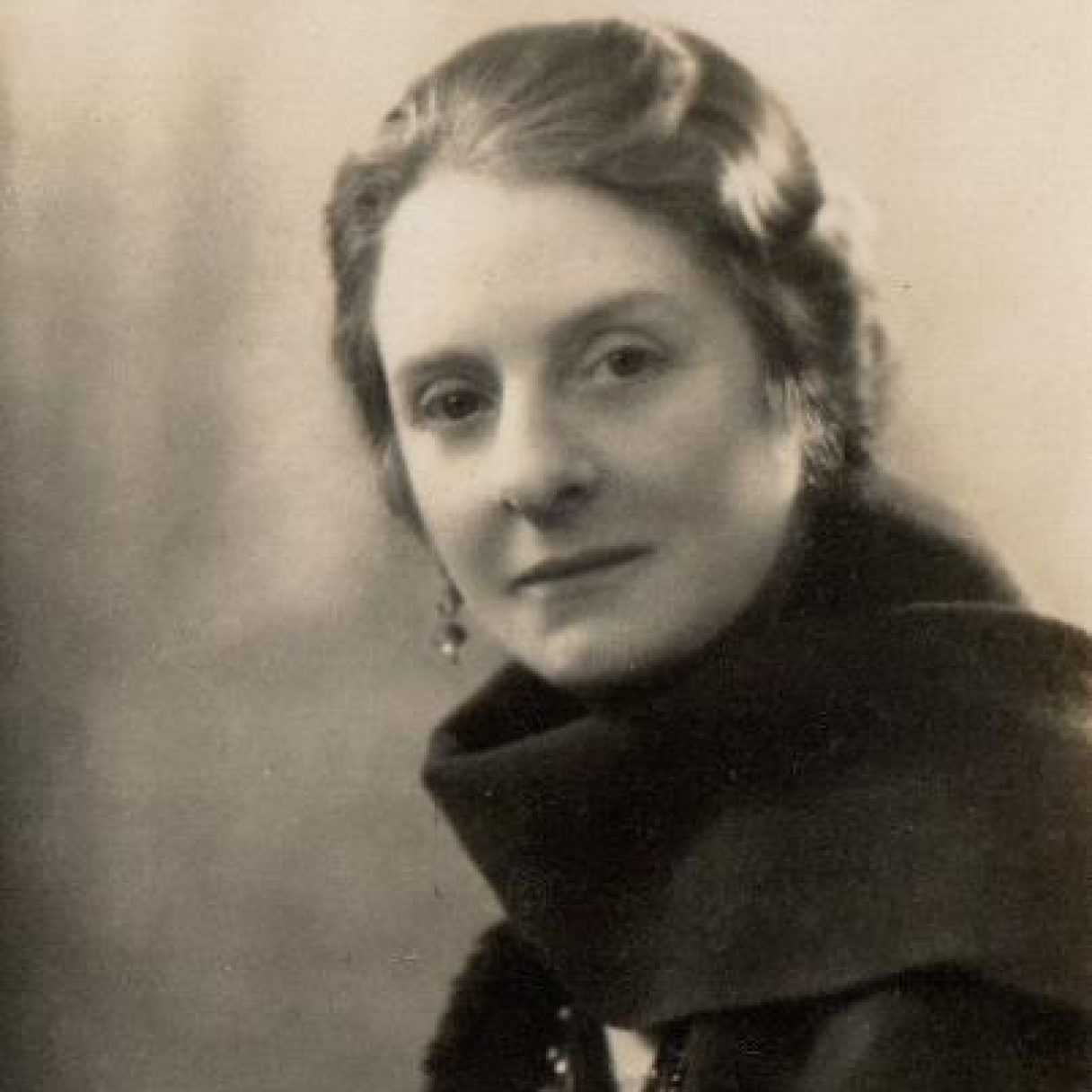
Blue Plaque to be unveiled on Bradford to Pioneering Actress and Director, Esmé Church
- Today (Friday 6 June 2025) Historic England unveils a national blue plaque to actress and director Esmé Church at 26 Chapel Street, Bradford.
- Esmé Church founded the Northern Theatre School, training future stars like Billie Whitelaw, Edward Petherbridge, and Robert Stephens.
- The unveiling is especially fitting as it coincides with Bradford’s year as City of Culture 2025.
- The blue plaque will be unveiled by Esmé and Carys Durham, Church’s great-great-great nieces, alongside Megan Wilson, Company Director of Purple Stage Theatres.
- Historic England’s National Blue Plaque Scheme highlights the stories of inspirational people from all walks of life who have made a significant contribution to human welfare or happiness, some famous and some whose history has been hidden or forgotten.
- To continue celebrating influential women of the 20th century, like Esmé Church, Historic England is partnering with Ancestry, the global leader in family history, for this year’s National Blue Plaque Scheme.
- Historic England and Ancestry are calling on the public to uncover further inspiring females from the 20th century, who may have been forgotten and deserve their place in history.
- The eight-week public nomination period for the National Blue Plaque Scheme is open from 16 May to 10 July 2025. The public is invited to submit their own nominations for people they would most like to see recognised through a Historic England national blue plaque at www.historicengland.org.uk
- To support public nominations during this year’s eight-week public nomination period for the National Blue Plaque Scheme, members of the public can access a 14-day free trial period on Ancestry to explore the 1921 Census of England and Wales, alongside 65 billion records (terms apply).
The National Blue Plaque Scheme is generously supported by Ancestry, Delancey, and The Earls Court Development Company.
Today (6 June 2025), Historic England unveils a blue plaque to Esmé Church at 26 Chapel Street, Little Germany, Bradford, where she founded and ran the Northern Theatre School.
Church was a trailblazing actress, director, and theatre educator who brought professional training and performance to the heart of regional theatre. Her legacy lies in her passionate belief that world-class theatre should be accessible beyond London and laying the foundations for this by establishing training for young actors outside of the capital.
The inscription on the plaque reads: ESMÉ/CHURCH/1893-1972/Actress and Director/ran the/Northern Theatre School/here.
The blue plaque will be unveiled by Esmé (named after Church) and Carys Durham, Esmé Church’s great-great-great nieces, alongside Megan Wilson, Company Director of Purple Stage Theatres (operators of the Bradford Playhouse). The unveiling will also feature a short, new spoken word performance inspired by Church, by local young poet Viktorija Poremska, who has been part of Shared Stories 2025, a Historic England-funded History in the Making scheme in Bradford.
The unveiling takes place during the eight-week public nomination period for the National Blue Plaque Scheme, from 16 May to 10 July 2025. In partnership with Ancestry, the public is invited to submit their own nominations for people they would most like to see recognised through a prestigious Historic England national blue plaque at www.historicengland.org.uk
Esmé Church
Esmé Church, born on 11 February 1893 in Marylebone, London, was a pioneering figure in British theatre as both an actor and director. She trained at the Guildhall School of Music and Drama and RADA. Listed in the 1921 Census of England and Wales, Esmé made her London stage debut in 1921, she soon rose to prominence, joining the Old Vic Company in 1927, where she performed major Shakespearean roles such as Lady Macbeth and Gertrude. Her career as a director began in 1931 when she became Artistic Director of the Greyhound Theatre in Croydon. Church held significant roles throughout the 1930s, both onstage and behind-the-scenes. She led the Old Vic’s drama school from 1936, introducing educational reforms and broadening access to the performing arts.
Church, however, is best remembered in Bradford for her leadership at the Bradford Civic Playhouse, where she served as Artistic Director from 1944 to 1950. There, she championed regional theatre, established the Northern Theatre School, and mentored a generation of actors who would go on to national prominence, such as Billie Whitelaw, Edward Petherbridge, Bernard Hepton and Robert Stephens. Well-loved in Bradford, former students have fond memories of the formative training they received from Church; for example, the actor Edward Petherbridge recalled that
‘Esmé had the status of a minor goddess in Chapel Street’ (‘Young Illusionists’, 10 Aug 2010, www.edwardpetherbridge.com). Her work laid the foundations for a thriving cultural scene in the city and left an enduring legacy in British theatre education.
The unveiling of this blue plaque to Esmé Church coincides with Historic England’s partnership with Ancestry, the global leader in family history. Together with Historic England, Ancestry is calling on the public to uncover hidden heroines listed in the 1921 Census of England and Wales.
Almost half of Brits (46%) believe they have a good knowledge of 20th-century British history, yet Church is one of many women in the 20th century who is largely unheard-of today, despite leaving an indelible mark on England’s history. Featuring in the 1921 census, Esmé Church’s story is an example of the fantastic contributions of women to society, that can be uncovered and celebrated today. To encourage the public to explore the lives of their ancestors and local community figures worthy of a blue plaque, there is a 14-day free trial period on Ancestry where users can access the 1921 Census of England and Wales, alongside 65 billion historical records, enabling the discovery of incredible life stories like Esmé Church.
Bradford City of Culture 2025
Celebrating Esmé’s contribution to the cultural scene in Bradford is particularly fitting as it celebrates its year as UK City of Culture in 2025. Historic England is working in partnership with Bradford 2025, Bradford Metropolitan Council and local communities to ensure the benefits of heritage are felt by everyone, and to create a lasting legacy that will sustain the benefits of this investment into the future. Historic England’s work supports Bradford 2025’s aim to celebrate the district’s rich history whilst empowering the next generation to shape its future.
Historic England’s wider work in Bradford this year includes a new Heritage Action Zone focusing on the historic heart of Bradford City Centre; four ‘History in the Making’ creative, youth-led projects empowering under-represented young people to discover and celebrate hidden local histories; an exciting outdoor art event celebrating the radical women who shaped modern Bradford; and support from Historic England’s Heritage Schools team for our City of Culture partners to help teachers and schools use the historic environment in their teaching.
Neil Mendoza, Chairman, Historic England, said: “Esmé Church was a formidable force in British theatre – an actor, director, and teacher whose influence shaped generations of performers. Like so many trailblazing women, working in the 1920s and 1930s, her legacy has not received the national recognition it deserves. By unveiling this blue plaque in Bradford, we honour not only her immense contribution to the dramatic arts, but also the power of West Yorkshire’s creativity in shaping our national story. It is time that Esmé Church takes her rightful place in the cultural memory of this country.”
Baroness Twycross, Heritage Minister said: “Esmé Church was an extraordinary actress, director and educator and believed that theatre should be enjoyed across the country. Her blue plaque in Bradford during its UK City of Culture year celebrates a remarkable woman whose vision for regional arts training shaped generations of performers and creative talent. I’m thrilled Esmé is getting the recognition that she deserves.”
Laura House, Family History Expert, Ancestry said: “1 in 3 British people feel as though women throughout history haven’t received the recognition they deserve, so we believe it is time to celebrate the stories of women who helped to shape the world we live in today.
The 1921 Census of England and Wales offers a fascinating window into the lives of millions of women whose world was transformed by war, loss, and social change. That’s why we encourage everyone to explore these records – not only to trace their own family’s journey, but to rediscover and honour the hidden heroines of the early 20th century with a blue plaque nomination.”
Bruce Durham, Great Nephew of Esmé Church, said: “It’s been an honour to celebrate Ancestry and Historic England’s partnership with the unveiling of my Great Aunt Esmé’s national blue plaque, giving her the recognition that she deserves for all her contributions to the arts.
Growing up with Esmé around, it was always wonderful to see and hear about her work – whether it was entertaining troops in France during the first World War, becoming the head of The Old Vic Theatre School, or travelling to and from New York.
It’s important that not only my Great Aunt Esmé is recognised but being able to use brilliant platforms such as Ancestry to uncover the many unsung women who made a significant impact during the early 20th century.”
Dan Bates, Executive Director, Bradford 2025 UK City of Culture, said:
“Esmé Church led a remarkable life as a brilliant actor and director, a champion of regional theatre and theatre for young audiences, and a pioneer in theatre education.
Her time in Bradford and the establishment of the Northern Theatre School alongside Bradford Civic Playhouse created new opportunities for northern actors, voices and stories. Marking this during Bradford 2025 UK City of Culture is a fitting moment to celebrate her part in Bradford’s artistic story and her legacy in the theatre world.”
Megan Wilson, Company Director, Purple Stage Theatres (operators of the Bradford Playhouse) said: “Esmé Church was a powerhouse in early 20th-century theatre, and her influence still echoes across stage and screen today. It’s brilliant to see her passion recognised – I hope it inspires a push for more women in leadership across the arts.”
Cllr Alex Ross-Shaw, Bradford Council’s Portfolio Holder for Regeneration, Planning and Transport, said: “This plaque will ensure Esmé Church is celebrated not only in our district but also further afield and her amazing legacy couldn’t be more relevant during our year as UK City of Culture.
“I’m also delighted Bradford is receiving it’s second national blue plaque, after Daphne Steele in Ilkley, who was the first Black matron in the NHS and the first national blue plaque to be unveiled in the country.
“It means Bradford will be the first place in the country outside of London to get two national blue plaques and is especially fitting as it builds on our ‘Pioneering Bradford Lasses’ campaign, which has seen numerous streets across the district named after our pioneering women who did so much to shape Bradford and the whole country.”
Si Cunningham, Chair of Bradford Civic Society, said: “It’s thrilling to see yet more national recognition for Bradford’s pioneering, creative heritage. Esmé Church is an incredibly deserving recipient of a national blue plaque — which perfectly complements the city’s own growing blue plaque scheme. I hope this beautiful plaque, and Esmé’s fascinating story, inspires a new generation of creative Bradfordians to do great things for their city.”
Funding Acknowledgement
We give special thanks to Ancestry, Delancey and The Earls Court Development Company for their generous support of Historic England’s National Blue Plaque Scheme, and to Bettys & Taylors of Harrogate Group Ltd for supporting the unveiling of the Esmé Church plaque.
Neil Mendoza, Chairman, Historic England, said: “Esmé Church was a formidable force in British theatre – an actor, director, and teacher whose influence shaped generations of performers. Like so many trailblazing women, working in the 1920s and 1930s, her legacy has not received the national recognition it deserves. By unveiling this blue plaque in Bradford, we honour not only her immense contribution to the dramatic arts, but also the power of West Yorkshire’s creativity in shaping our national story. It is time that Esmé Church takes her rightful place in the cultural memory of this country.”





